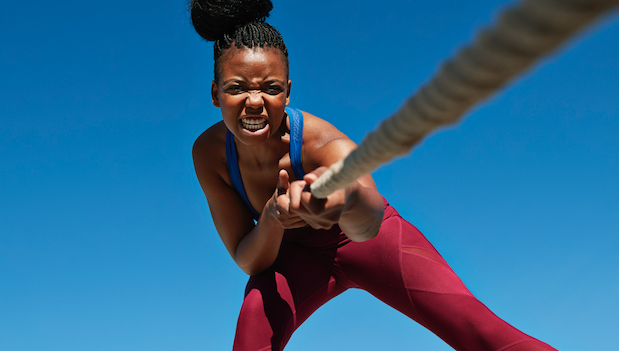
“No pain, no gain”, we’ve all heard that before.
As much as there is some truth to that, not all exercise-related aches were created equal.
We spoke to founder of Trove Wellness Juanita Khumalo on discerning between good and bad post-workout pain.
What is “good pain/good soreness”? (What does it feel like)?
Pain from exercise which is often referred to as DOMs – Delayed Onset Muscle Soreness or a burning sensation experienced while doing weights is a norm. DOMS is caused by microscopic tears within the muscle tissue created during your intense exercise activity, which is normal.
Usually the burning sensation you experience while lifting weights diminishes when you stop the physical activity. DOMS may last for up to a day or two and it generally shouldn’t stop you from conducting your day-to-day activities.
What is “bad pain/bad soreness”? (How does it feel)?
There are several types of pain which are not “good” and would require you to stop exercising to avoid any further injury and get checked by a physiotherapist or get medical attention. Examples of such pain include and are not limited to:
- Pain which increases when you exert pressure on that particular joint
- Pain in an area that was previously injured
- Pain associated with swelling or deformity
Should you experience any of the above, please rest and seek medical attention.
READ MORE | Can being part of the 5AM club turn your life around? 5 tips to help you become an early riser
Is working out when sore a bad idea and why?
Exercising when in pain is not a good idea at all. Of course one first needs to ascertain whether you’re experiencing soreness or pain, there’s a big difference between the two and listening to your body is fundamental in establishing which it is.
A workout will generally not leave you in dire pain. Exercising when sore/injured could make the injury worse and putting you out exercise for weeks and even months.
One can exercise if you’re working out a different muscle group e.g. If you have a knee injury you can still exercise your upper body and/or opt for light exercises such as a walk. This will, of course, be recommended by your medical practitioner based on the extent and type of injury.
How much soreness or pain is too much (at what stage should a medical opinion be requested?)
There’s a difference between normal gym soreness e.g. DOMS and the burning sensation experienced during a physical activity which was mentioned above VS pain.
Oftentimes your body may need a rest day or an active rest day where you do light physical activity, when you’re experiencing normal soreness from exercise. When you experience pain, it doesn’t matter how insignificant or small it may seem, it’s worth a check-up. A “light injury” could be made by exerting yourself further by exercise.
A few other instances of injuries include, and are not limited, to pain experienced in an area which was previously injured, a sharp pain which prevents you from movement, fevers or swelling.
What are your five tips for reducing muscle soreness/relieving pain?
1. Stretching before and after exercise.
2. Using a foam roller to speed up healing and recovery.
3. Warming up before you lift weights.
4. Massaging your body is a great form of sore muscle treatment.
5. Heat your body! Applying heat or using a heating pad to your body a few hours after exercise can aid with muscle soreness as it warms you up and soothes your muscles prior to your workout routine.
READ MORE | Understanding your metabolism
Is there any way to prevent the soreness/pain? (Both good and bad)
Exercise is meant to be challenging and progressively pushing your body to perform better, therefore you cannot really avoid or prevent good pain. Food sources or supplements which are rich in vitamins and minerals such as magnesium, potassium, vitamin C, calcium, Vitamin D, B Vitamins, are fantastic for muscle soreness and recovery.
The best way to prevent bad pain is to perfect your form and technique when exercising. Most injuries are result of poor form. A personal trainer will assist with teaching you good form and so should class instructors.
Don't miss our top stories, sign up to the TRUELOVE newsletter now!










